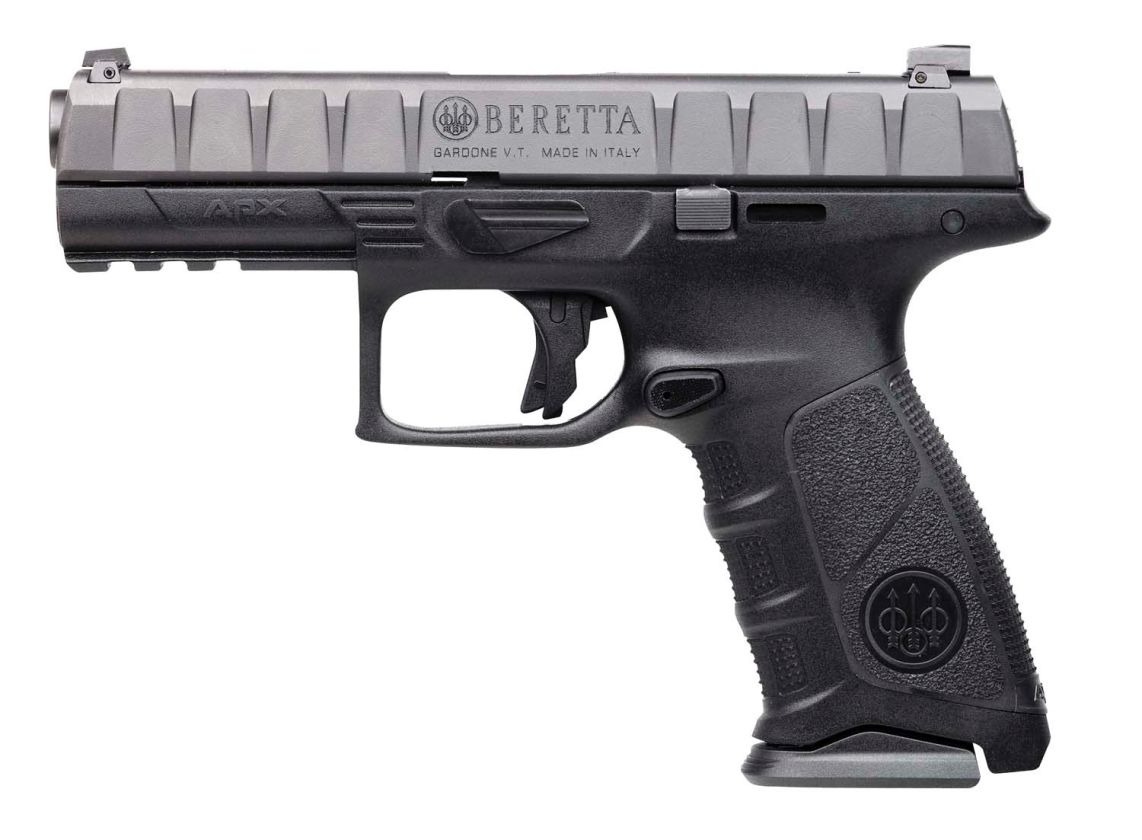Beretta APX Signifies End of an Era
Not long ago, fans of striker-fired pistols had only a handful of polymer “wonder” guns with which to fill their holsters and satisfy their hammerless appetites. Indeed fewer than ten years ago, companies like Glock and Walther (and to some degree Springfield Armory) were among the only options for popular, reliable striker pistols that also had some sort of military or police following and pedigree. Because of this, there has always been somewhat of a divide in the handgun market. Some companies, such as Glock and Walther have earned impressive reputations for manufacturing high-quality striker-fired pistols while others, such as Heckler & Koch, SIG Sauer, and Beretta have practically always been major players in the hammer-fired world. Until recently, these two worlds have coexisted but seldom overlapped. In light of this segregated history, this week’s Beretta APX announcement is particularly noteworthy as it marks the end of an era for handgun manufacturers and possibly the end of hammer-fired pistols as a whole.
When Smith & Wesson released the M&P line of striker handguns in 2005, the decision seemed like a logical departure from the company’s troubled Sigma line of Glock clones (or copies). Noticing Glock’s dominance in the law enforcement market, a sector once firmly held by hammer-fired S&W pistols and revolvers, the Massachusetts-based company sought to take a bite from Glock’s market share with the M&P. If you are reading this article, you are likely aware that the M&P has been a resounding success for S&W and is second only to Glock in terms of law enforcement usage in the United States.
Noticing the success of companies like Glock and S&W, several other manufacturers have begun to shift away from hammer-fired guns in favor of simpler striker options. Fabrique Nationale revamped their FNP/FNX line with the FNS in 2011, and SIG Sauer and Heckler & Koch released the P320 and VP9 respectively in 2014. Each time, these companies latched on to a new, striker-loving segment of the market that previously would have looked elsewhere. In light of this precedent, Beretta’s announcement this week it too will join the striker-fired ranks should come as no surprise to the business-savvy shooter.
The APX takes many cues from SIG Sauer’s P250/320 series of handguns. Built around a steel chassis, the polymer “frame” of the handgun can be swapped out without further FFL involvement. This means that the pistol will be easily adaptable to concealed carry applications, as well as competition usage without the need for more than one firearm. While the design is uglier than homemade sin (in my opinion, but look at those slide serrations), the low bore axis and ergonomic grip should make it a nice shooter as long as the trigger meets the same sort of standard that we have come to expect from Beretta. The firearm is also built with both hands in mind and will be fully ambidextrous while packing 17 rounds into its double-stack magazine.
While I love to see new designs come to market, I have to admit that a degree of sadness or nostalgia came over me when reading about the APX. I grew up playing games like CounterStrike, America’s Army, and Ghost Recon in which handguns like the Beretta M9/92FS and the HK USP were common features. Excluding variations or incremental releases, it has now been several years since we have seen a new hammer-fired design from any of the major manufacturers, and it appears that no new developments are on the horizon. Because of this, the APX may signal that it is time to put the hammer-fired pistol to bed once and for all. Even though I highly doubt that companies like Beretta will stop making their classic hammer pistols, I simply do not expect any new hammer-fired guns any time soon.
An information security professional by day and gun blogger by night, Nathan started his firearms journey at 16 years old as a collector of C&R rifles. These days, you’re likely to find him shooting something a bit more modern – and usually equipped with a suppressor – but his passion for firearms with military heritage has never waned. Over the last five years, Nathan has written about a variety of firearms topics, including Second Amendment politics and gun and gear reviews. When he isn’t shooting or writing, Nathan nerds out over computers, 3D printing, and Star Wars.

